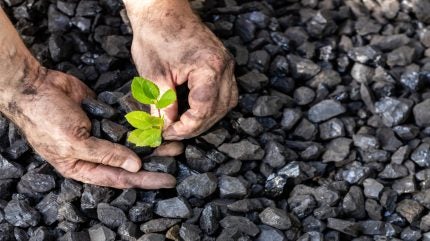Sign up for daily news updates from CleanTechnica on email. Or follow us on Google News!
Agricultural technologies (AgTech) is an arena of the clean tech ecosystem that can address a good chunk of our global climate changing emissions. Estimates range widely depending on how things are measured, but suffice to say, I think we can leave it at “a good chunk.” I’ll break it down into a few categories, and offer some prognostications for the year ahead in each field.
There are plenty of hopeful signs in the agriculture space that do not relate to tech. Here’s just a sampling, and then I’ll get to more the AgTech stuff below.
- Farmers’ markets are incredibly popular — growing from around 1500 in the U.S. in the early ’90s to 7x that nowadays. While growth has slowed, there has not been a bottoming out, so it appears farmers’ markets are here to stay.
- Sale of organic food products in the US basically doubled in the last ten years or so.
- A growing awareness of the hazards of plastic use have resulted in many food manufacturers redesigning their packaging and even putting things like “85% less plastic” right on the label, a great thing for public education.
Cell-based Meat
This is a technology I’ve been excited about for years. The idea is simple — grow a burger in a petri dish, more or less. Eliminate the cow (and all its methane burps and farts), the intense amount of land and water needed to grow an ounce of meat, the fossil fuels needed to ship live cows around (even “grass fed” cows are often shipped sometimes thousands of miles to fatten up on GMO corn and soy before slaughter) or the refrigerated trucks, shipping containers, etc., to ship around the beef after slaughter, the degradation of soil, the clearcutting of the Amazon, etc.
Making it happen on a production scale is not so simple. So far the tech still lives in the laboratory, despite billions of dollars of investment in more than a hundred cell-meat startups.
Isha Datar, Executive Director of New Harvest (a cultured meat research institute) predicted in 2021 that the industry was more or less at the top of the “Peak of Inflated Expectations” on Gartner’s Hype Cycle. Basically, a ton of interest and money flowed into the space, including a Google funded $250K burger, and then the reality set in — that this sh*t is hard AF. Recently, Datar updated her graphic to reflect where she thinks cellular ag is currently:

When I spoke with Datar, she suggested that this is a necessary step, and still represents progress. More on that in a minute.
Josh Posamentier, co-founder of Congruent Ventures, an early stage venture focused on all things climate, agrees. Posamentier reviewed quite a few pitches by startups seeking funding in this space in 2023, and came away with the sense that it’s still a ways off.
“Cell ag is largely derived from medical grade processes and has never scaled,” he said. “The most ambitious of cell ag reactors are still smaller than other fermentation company’s pilot reactors, never mind the production ones. Last year, multiple cell ag companies focusing on meat claimed to have hit key milestones … but many are still not able to perform in fully submerged growth processes (the way other fermentation has scaled) and is still on-scaffold growth, not as fast or as scalable.”
Datar suggests this is not a bad thing. “It’s still progress,” she said, citing that this is just how things go in tech, and that it’s a necessary step for an industry still figuring itself out. Datar points out that the influx of money and interest spawned a lot of good things: many countries have started investing public money (tens of millions, to be clear, but it’s a start….), and several universities have opened labs in the field.
I often look at other forms of disruptive technology to see how things might go in the climate space. GE started working on the first lab-grown diamond in the 1950s, for example, but commercialization really only happened in the 2020’s – roughly 3 generations later. Nowadays, diamond shoppers are likely to buy a lab grown diamond without even noticing. It comes with far fewer climate emissions, no slave labor, no toxic mine chemical leaching… so many good things. A lab-grown burger would be similar, and anyone in the know or working in the industry will see this coming as an inevitability. That inevitability will start making investors and lenders in the traditional animal husbandry industry a little less willing to put money out – so the seeds planted in the period of inflated expectations in cellular meat are already at work and are going to win in the long term. It’s only a matter of time.
Farms
Using technology on farms is not as simple as it seems. Farmers tend to be cautious adopters, and with good reason. One bad year won’t necessarily destroy the business, but string a few together and bad things happen. Posamentier expects to see a lot of automation initiatives this year.
“I see labor shortage as being the big driver,” said Posamentier. “The undercurrent of most farmers’ view on technology is that they’ll get at most 30-40 shots on goal throughout their working lifetimes. When that’s it, there’s only so much risk they’ll take. My personal experience with farmers is that they’re incredibly tech-forward when something’s proven. Adoption for autonomy and semi-autonomy in broad acre crops (from Deere and Trimble) was fast and is now pervasive. But 100% of operations have an operator in the cab. Starting with immigration crackdown initially and then COVID, labor markets tightened up dramatically necessitating the need to do more with less.”
One example Posamentier gives is Bonsai Robotics, an AI company Congruent has invested in. The company’s tech results in fewer passes over the same ground, which has some effect on soil health, but mostly helps the financial bottom line of the farm.
Precision fermentation
Compared to Cellular meat, precision fermentation is likely much farther along on the Gartner Cycle. Perhaps this is because of its flexibility. According to the Good Food Institute, precision fermentation has helped create the ingredients that plant-based foods need in order to replace animal products. They cite the dairy proteins in Perfect Day’s plant-based “dairy” products, the egg proteins by Clara Foods, and the heme proteins in the Impossible Foods’ suite of products.
If you’ve ever tasted a Beyond Burger, Impossible Burger, Just Egg, or so many of the other plant based alternatives, you’ve likely been simultaneously impressed, amazed, and somewhat frightened at how close it resembles its animal cousin.
We’ll continue to see growth in this utilitarian space this year, creating a lot of the necessary widgets, cogs, and levers needed to advance some of the other fields of AgTech.
Biomass fermentation
This is the process in which microbes are used not to create ingredients, but are the product themselves. Good Food Institute cites filamentous fungi created this way as a base for Quorn and Meati, two startups in the alt protein space.
We should see in 2024 some significant movement in the field of fungi packaging replacing plastic packaging. It’s a nascient industry but with many municipalities and states and countries starting to look at partial and full single use plastic bans, the market is ripe.
Large-scale ag and GMOs
GMO monocrops of corn, soy, and wheat dominate a huge portion of the earth’s arable land. The total arable land of the United States (globally #1 in this category) plus Argentina is roughly equal to the total global arable lands used for GMO agriculture globally.
We don’t see any significant shift in this space this year. It’s a mature industry, and will likely just decay over time as innovation makes this fossil fuel and chemical-intensive process more and more obsolete over time. The major blow to GMOs will come when cellular meats really hit market growth — since most of the world’s GMO crops are grown to feed cows, chickens, turkeys, and pigs. So at some point, the middle man will be cut out — and much of that arable land will return to forest, prairie, etc.
Have a tip for CleanTechnica? Want to advertise? Want to suggest a guest for our CleanTech Talk podcast? Contact us here.
Our Latest EVObsession Video
I don’t like paywalls. You don’t like paywalls. Who likes paywalls? Here at CleanTechnica, we implemented a limited paywall for a while, but it always felt wrong — and it was always tough to decide what we should put behind there. In theory, your most exclusive and best content goes behind a paywall. But then fewer people read it!! So, we’ve decided to completely nix paywalls here at CleanTechnica. But…
Thank you!
CleanTechnica uses affiliate links. See our policy here.




